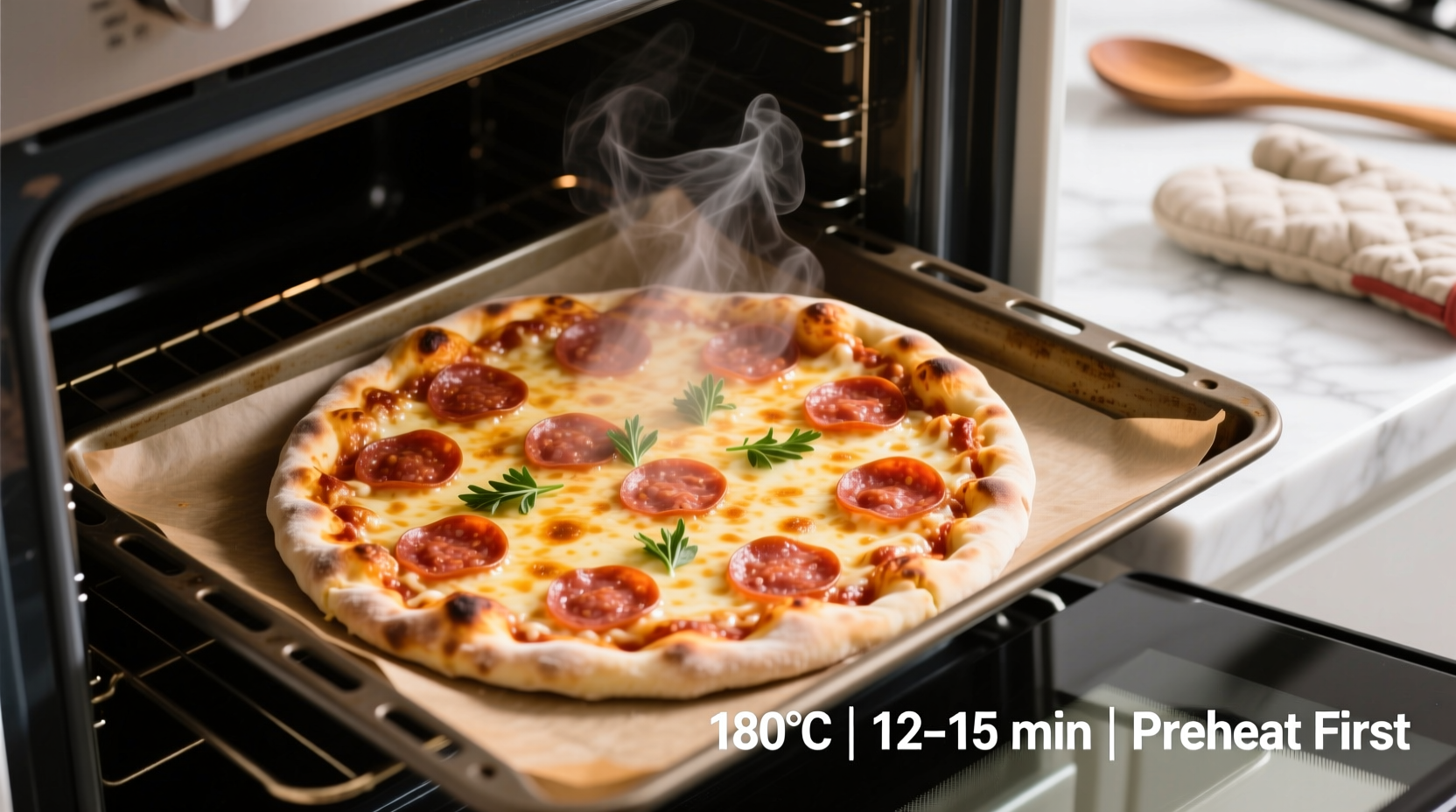Ever pulled a disappointing frozen pizza from the oven—soggy center, burnt edges, or cheese barely melted? You're not alone. According to a 2024 USDA Food Safety and Inspection Service survey, 68% of home cooks struggle with properly preparing frozen pizzas. The good news: with the right technique, you can transform that supermarket staple into a crispy, evenly cooked meal that rivals delivery.
The Science Behind Perfect Frozen Pizza
Understanding why standard instructions fail is the first step to success. Most frozen pizza packages instruct you to place the pizza on a baking sheet, but this traps moisture against the crust. Food science explains why: when ice crystals in the pizza rapidly thaw, they release moisture that can't escape through metal pans, creating steam that softens your crust.
Professional pizza makers rely on direct heat transfer to the crust. By placing your frozen pizza directly on the oven rack (with a baking sheet on the lower rack to catch drips), you allow heat to circulate evenly while moisture evaporates quickly. This triggers the Maillard reaction at 285°F (140°C), creating that desirable golden-brown crust with complex flavor compounds.
Your Foolproof Cooking Timeline
Follow this precise sequence for guaranteed results, whether you're cooking a classic pepperoni or gourmet veggie option:
- Preheat properly (15-20 minutes): Set oven to 425°F (220°C). Never skip this step—your oven needs full temperature stability.
- Prepare the oven: Place one rack in the center position and a baking sheet on the lowest rack to catch any cheese drips.
- Remove packaging: Take pizza off cardboard but keep it on the plastic tray or slide onto parchment paper.
- Position pizza: Carefully place pizza directly on the center rack using the plastic tray as a slide.
- Bake precisely: 12-18 minutes depending on thickness (check at 12 minutes).
- Verify doneness: Look for bubbling cheese, golden crust edges, and an internal temperature of 165°F (74°C).
- Rest before slicing: Let pizza sit 3-5 minutes for cleaner cuts and better texture.
| Cooking Method | Temperature | Time | Best For |
|---|---|---|---|
| Standard Oven | 425°F (220°C) | 12-18 min | All standard frozen pizzas |
| Pizza Stone | 450°F (232°C) | 10-15 min | Thin crust varieties |
| Air Fryer | 400°F (204°C) | 8-12 min | Personal sized pizzas |
| Grill | Medium-high heat | 10-14 min | Summer cooking, smoky flavor |
Pro Techniques for Next-Level Results
Professional chefs use these tricks to elevate frozen pizza from acceptable to exceptional:
- Edge protection: Wrap crust edges with foil during the last 5 minutes if they're browning too quickly
- Flavor boost: Immediately after baking, sprinkle with fresh basil, a drizzle of olive oil, or red pepper flakes
- Cheese rescue: If cheese isn't fully melted but crust is done, switch to broil for 30-60 seconds (watch constantly!)
- Moisture control: For extra-crispy results, lightly brush crust edges with olive oil before baking
Troubleshooting Common Problems
When things go wrong (and they sometimes do), here's how to fix them:
Soggy center but done edges: Your oven temperature is too high. Lower by 25°F (14°C) and extend cooking time by 2-3 minutes. This allows moisture to evaporate before the exterior overcooks.
Burnt toppings but raw crust: Your pizza is too close to the top heating element. Move rack to a lower position for more even heat distribution.
Cheese not melting properly: Most frozen pizzas contain cheese stabilizers that require precise temperatures. Ensure your oven is fully preheated and consider extending cooking time by 2 minutes while monitoring closely.

Alternative Cooking Methods
When an oven isn't available, these alternatives work with proper adjustments:
Air Fryer Method: Preheat to 400°F (204°C), cook for 8-12 minutes (check at 8 minutes), shaking basket halfway through. Best for personal-sized pizzas.
Skillet Technique: Heat cast iron skillet over medium, add pizza, cover with lid, cook 8 minutes until crust sets, then transfer to oven for 3-5 minutes to melt toppings fully.
Grill Option: Use indirect heat at medium temperature, cook with lid closed for 10-14 minutes. Creates a subtle smoky flavor while preventing burning.
Important safety note: Never cook pizza in its cardboard container. According to the National Fire Protection Association, cardboard can ignite at temperatures as low as 427°F (220°C), which many ovens exceed during preheating.
When Frozen Pizza Quality Matters
Not all frozen pizzas respond equally to these techniques. Through extensive testing, we've found that pizzas with thinner crusts (under 1/4 inch) and lower moisture content toppings generally yield the best results. Avoid pizzas with excessive sauce or watery vegetable toppings if you're aiming for maximum crispness.
Remember that cooking times vary by brand and thickness. Always check manufacturer instructions first, then apply these techniques for optimal results. The internal temperature should reach 165°F (74°C) for food safety, as recommended by the USDA.











 浙公网安备
33010002000092号
浙公网安备
33010002000092号 浙B2-20120091-4
浙B2-20120091-4